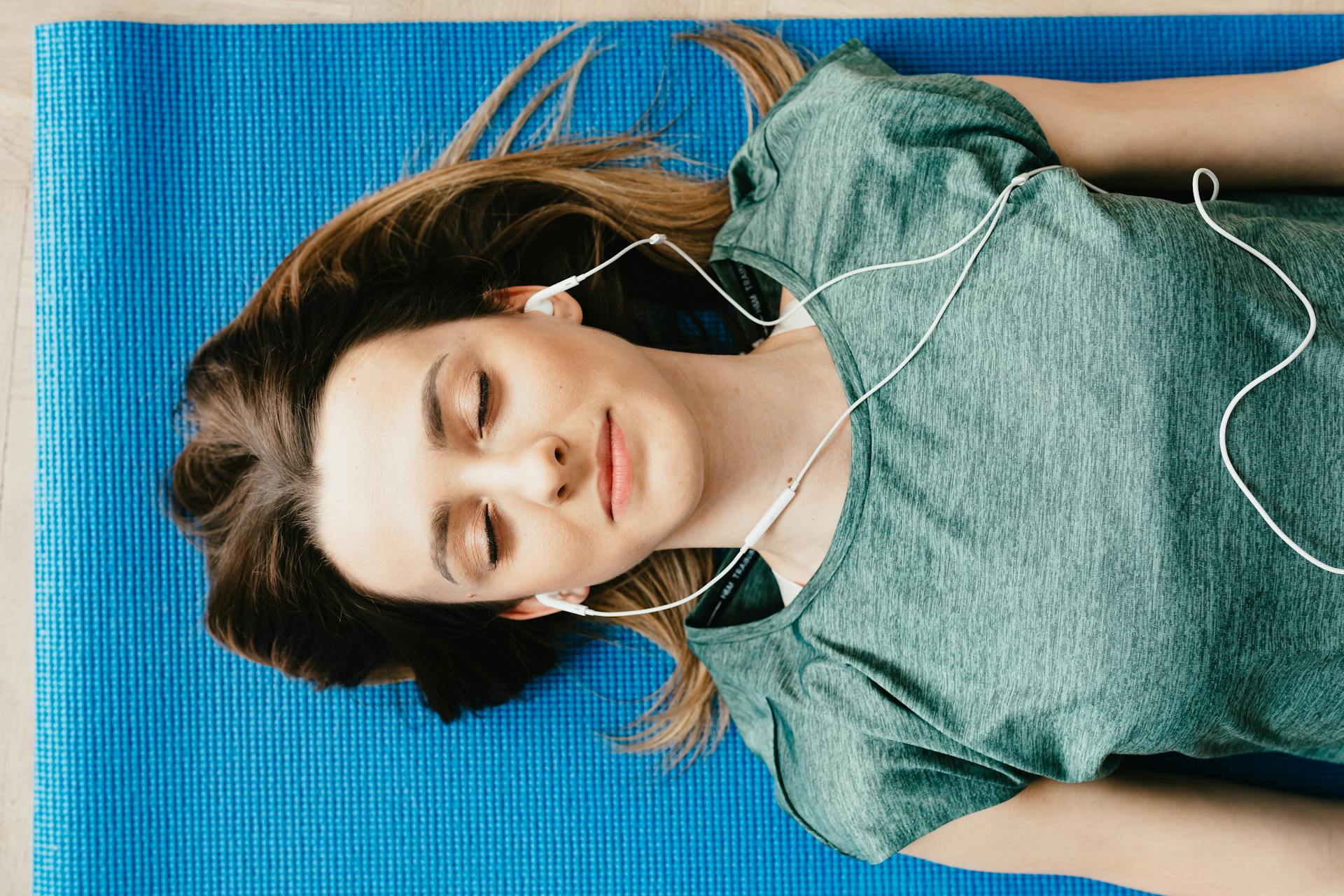When stress is buzzing in your body like static, you might instinctively reach for your headphones or hit play on your favorite rain track. Maybe it’s 5 minutes before a meeting, or maybe it’s on loop while you sleep. But if you’re serious about using stress relief audio as a healing tool, one question inevitably surfaces:
How long should you listen to stress relief audio to actually feel a difference?
Is 5 minutes enough? Do you need a full hour? Is more always better?
The answer isn’t one-size-fits-all—but science, user experience, and body awareness all offer valuable clues. Whether you’re using binaural beats, ambient music, nature sounds, or guided meditations, this guide will break down timing strategies that help you get real, repeatable results.
🧠 Why Time Matters When Using Stress Relief Audio
Stress relief audio works because it shifts your brain and nervous system from states of high tension (fight-or-flight) to lower arousal states (rest-and-digest). But your system doesn’t always switch instantly.
Think of stress like a cup filled with pressure. A short session might crack the lid open, but a longer one might actually empty it.
Audio length influences:
- How deeply your brainwaves shift
- How much your heart rate and breath slow
- How long the effects last afterward
- Whether you just “pause stress” or actually process it
The trick isn’t just to play more audio—it’s to match the duration to your goal.
⏱️ Quick Reference: How Long to Listen Based on Your Need
| Goal | Suggested Duration | Type of Audio |
|---|---|---|
| Immediate anxiety relief | 5–10 minutes | Breath pacing, rain, grounding tones |
| Transition to sleep | 15–30 minutes | Ambient music, ocean waves, delta waves |
| Deep nervous system reset | 30–60 minutes | Binaural beats, sound healing, full body scans |
| Background calm during tasks | Continuous | Pink noise, lo-fi, ambient synths |
| Emotional release (grief, anger) | 20–45 minutes | Solfeggio, vocal toning, guided meditations |
| Meditative or spiritual practice | 15–60 minutes | Singing bowls, chanting, theta beats |
Now let’s dive deeper into why these lengths matter—and how to use them well.
🎯 Under 10 Minutes: Quick Fixes That Actually Help
Sometimes you don’t have 30 minutes. You just need to pause a rising panic, get grounded before a meeting, or shake off the chaos of a commute.
What works in 5–10 minutes?
- Breath-coordinated audio
(e.g., music that paces a 4-7-8 breath rhythm) - Rain, wind, or waterfall loops
- Low-frequency brown noise
- Short binaural beats (alpha range)
- Mini guided grounding meditations
Why this works:
In as little as 90 seconds, your brain can start responding to shifts in rhythm and frequency. A few minutes of low, rhythmic audio can:
- Lower blood pressure
- Slow heart rate
- Decrease cortisol levels
- Increase vagal tone (which helps you calm faster)
🧠 Pro tip: If you’re highly sensitive to stress, even 3 minutes of focused listening with closed eyes can re-center your nervous system.
😌 10 to 30 Minutes: The Sweet Spot for Real, Lasting Relief
If you want to move from feeling “less tense” to actually calm, this is your magic window. Studies show that the parasympathetic nervous system (rest mode) kicks in most fully after 10 to 20 minutes of consistent calm stimuli.
Ideal for:
- Transitioning from work to rest
- Post-anxiety recovery
- Meditative states
- Journaling or yoga with background audio
Best formats:
- Delta or theta binaural beats (for deeper brainwave shifts)
- Soft ambient music with long transitions
- Nature + melodic instruments (e.g., ocean + flute)
- Guided meditations for stress relief
This timeframe allows your brain to:
- Leave beta waves (stress mode)
- Enter alpha (relaxed) or theta (meditative)
- Begin emotional regulation and mental clarity
- Experience sustained breath slow-down
💡 Tip: Don’t multitask the whole time. Even 5–10 minutes of “eyes closed, breath slow” time at the start deepens the impact of the whole session.
🧘♀️ 30 to 60 Minutes: Nervous System Reset Mode
When you’re burned out, overstimulated, or recovering from chronic stress, longer sessions can act like a deep cleanse for your mind and body.
This is the optimal window for:
- Deep meditation or nap with audio support
- Grief processing or trauma recovery
- Sound baths or chakra-balancing tones
- Long-form binaural beat sessions
What makes 30+ minutes special?
After 25–30 minutes of low-stimulus, soothing audio:
- Cortisol may drop significantly
- Your brain may enter theta or delta states
- Your mind may finally release looping thoughts
- The body’s muscles and organs soften into true rest
🎧 Use tools like:
- Solfeggio frequency meditations (528 Hz for healing, 396 Hz for release)
- Singing bowl sessions
- Isochronic tones with pulsing rhythms
- Custom ambient tracks tuned to your mood
This is also a great length for yoga nidra, body scan meditations, or anything involving deep emotional digestion.
💤 Continuous Listening: All-Night or All-Day Use
Some stress relief audio works best when left running in the background—not for a shift in state, but to maintain stability.
This includes:
- Brown or pink noise while sleeping
- Ocean wave loops
- Lo-fi ambient music while working
- Subtle binaural beats at low volume
When to use it:
- During sleep recovery or insomnia
- While working from home or in a noisy office
- When your nervous system feels constantly “on edge”
- If you’re sensitive to sounds in your environment
How to listen long-term:
- Use speakers or open-back headphones for comfort
- Choose loops without sudden shifts
- Keep the volume low enough not to fatigue the ear
- Consider battery life or charging strategies overnight
🔥 Note: Be cautious with all-night listening. Some people love it; others feel overstimulated. Always check how your body reacts.
🧪 What Science Says About Stress Relief Audio Timing
Multiple studies back up the idea that time spent matters—but what matters more is how that time is structured.
Key findings:
- 12–15 minutes of calming music significantly lowers cortisol in most adults.
- 30+ minutes of binaural beats can enhance sleep quality and HRV (heart rate variability, a marker of calm).
- Short daily practices (5–10 minutes) are more effective long-term than rare hour-long sessions.
- The body enters deep relaxation faster if you return to the same audio track regularly.
🧠 Your brain loves repetition. It builds neural “shortcuts” to calm if it knows what to expect.
📈 Tips to Maximize Results at Any Length
No matter how long you listen, these strategies help you get the most from your session:
1. Use headphones when possible.
Especially important for binaural beats, voice clarity, or immersive experiences.
2. Close your eyes for the first 1–3 minutes.
This signals the brain to shift inward—and doubles the effectiveness of short sessions.
3. Anchor the session with breath.
Sync your inhale/exhale to a beat, tone, or background rhythm.
4. Repeat your go-to track.
Repetition builds emotional safety and faster regulation.
5. Don’t just “play it and walk away.”
Be present—even for 60 seconds—to tell your body: we’re calming down now.
❌ Signs You’re Listening Too Long (Yes, It Can Happen)
Surprisingly, more isn’t always better.
If you’re feeling:
- Foggy, heavy, or groggy afterward
- Emotionally raw or flooded
- Restless mid-way through a long session
- Stiff or uncomfortable in your body
You may need to shorten the session or change the type of audio.
Some people are especially sensitive to:
- Theta tones (can trigger emotional processing too fast)
- Heavy droning frequencies (can feel hypnotic or depressive)
- Certain voices or affirmations (can feel intrusive if you’re not ready)
Always honor your limit. This isn’t a race—it’s regulation.
🧭 Personalize Your Listening Time: A Guided Plan
Try this 5-day experiment:
Day 1: 5 minutes with eyes closed, brown noise only
Day 2: 10 minutes of nature + piano (light instrumental)
Day 3: 15 minutes of guided breath meditation
Day 4: 30-minute binaural beat delta track before bed
Day 5: 8-hour pink noise overnight while sleeping
Take notes. When did you feel most regulated? Most annoyed? Most sleepy?
Over time, you’ll learn your personal “sweet spot” window—and it might surprise you.
🧘 Final Takeaway: Don’t Obsess Over Minutes—Obsess Over Presence
While the research gives us strong guidelines, the most important factor is consistency + awareness. You’ll know it’s working when you feel:
- Your shoulders soften
- Your breath deepens
- Your inner dialogue quiets
- Your body says, “Thank you”
So… how long should you listen to stress relief audio?
As long as it takes to remember that you’re safe, here, and whole.
For some, that’s 3 minutes.
For others, that’s an hour.
But for all of us—it’s worth the time.

